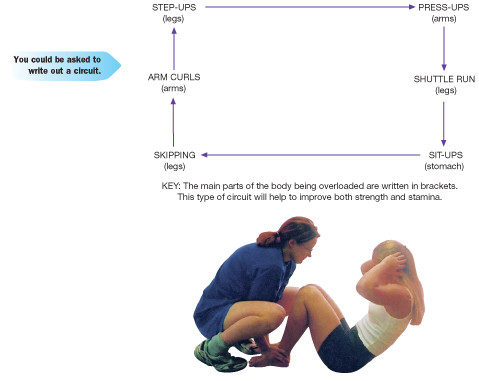Circuit Training
This type of work includes a number of physical activities performed one after the other in the form of a circle or circuit. There are two basic variations: fixed load and individual load. Both follow a similar pattern. The order of events is important.
1. Fixed load – the individual attempts to perform each exercise continually over a given time. When this is achieved, the circuit is redesigned to increase the stress level by setting a new target (e.g. lengthening the work periods or shortening the rest periods).
2. Individual load – the individual establishes their own level of work for each exercise. This is usually between 50% and 60% of the maximum that a person can do for 1 minute of the exercise. They are then timed for each circuit of exercises and aim to be faster each time they do the circuit. With individual load circuits it is possible to increase stress by reducing the rest periods between the exercises and by increasing the load level.
Circuits can be designed to build up strength, increase local muscular endurance or improve total stamina. The picture below shows an example of a simple sixstation circuit. Note that each exercise puts stress on a different part of the body and that each body part is worked in turn.
You could be asked to write out a circuit.

The advantages of circuit training are that:
- the variety of exercises prevents boredom
- as exercises can be done inside, there is no need to worry about the weather
- any kind of exercise can be included
- it is easy to measure progress
